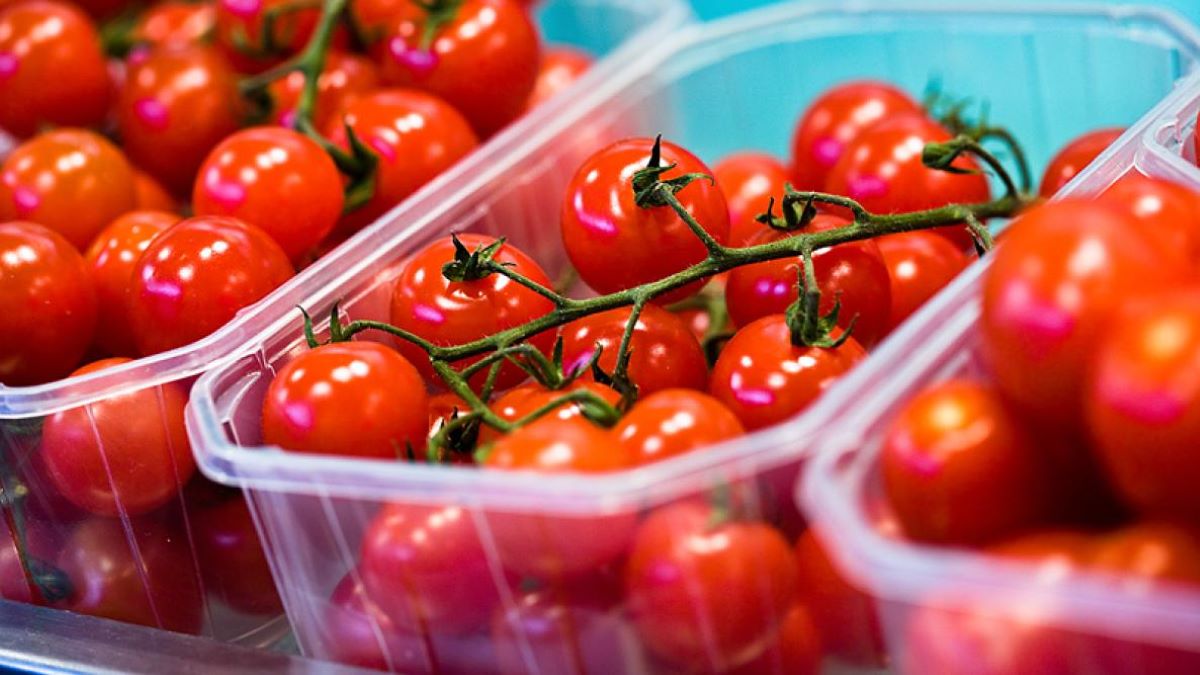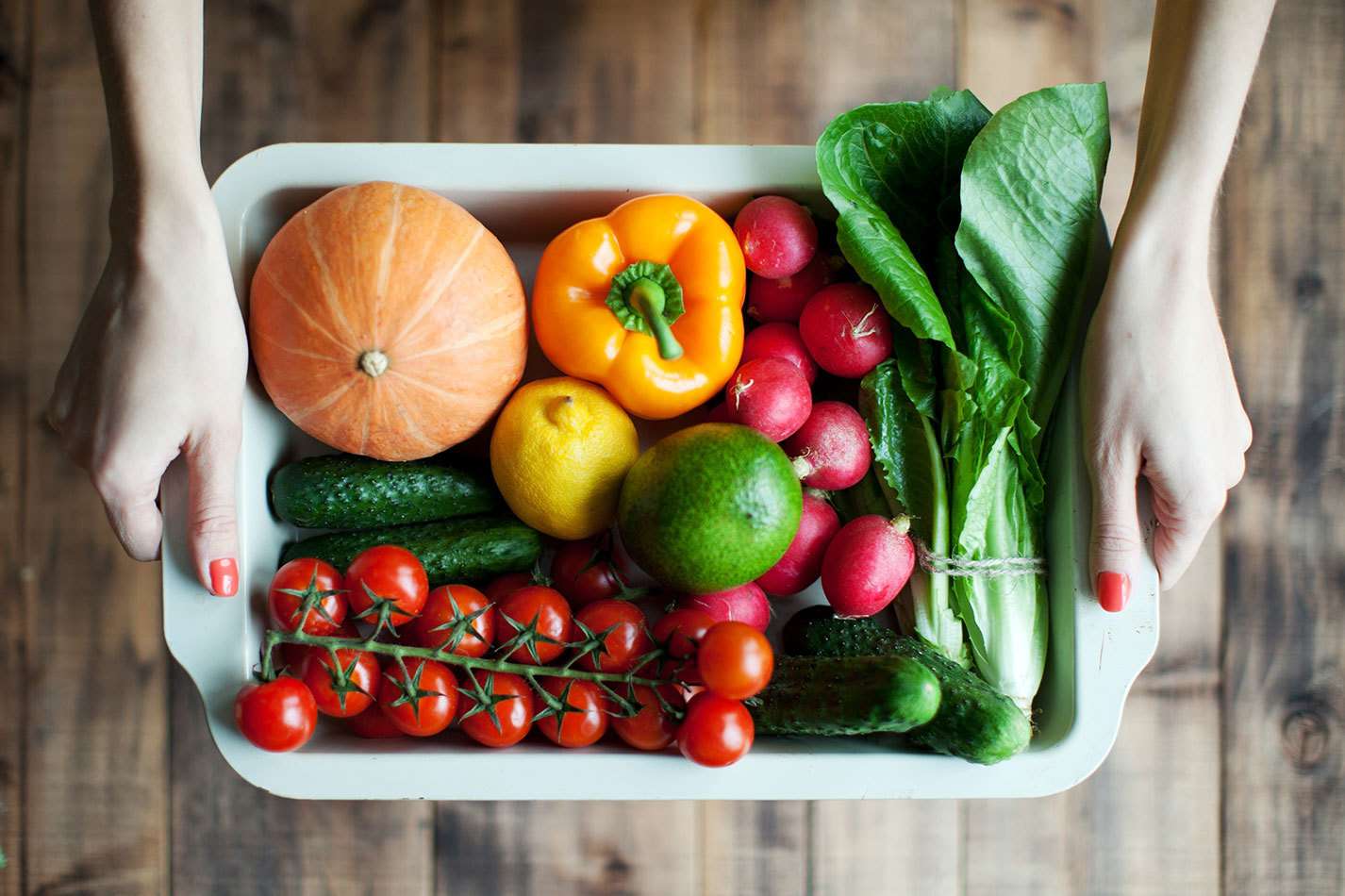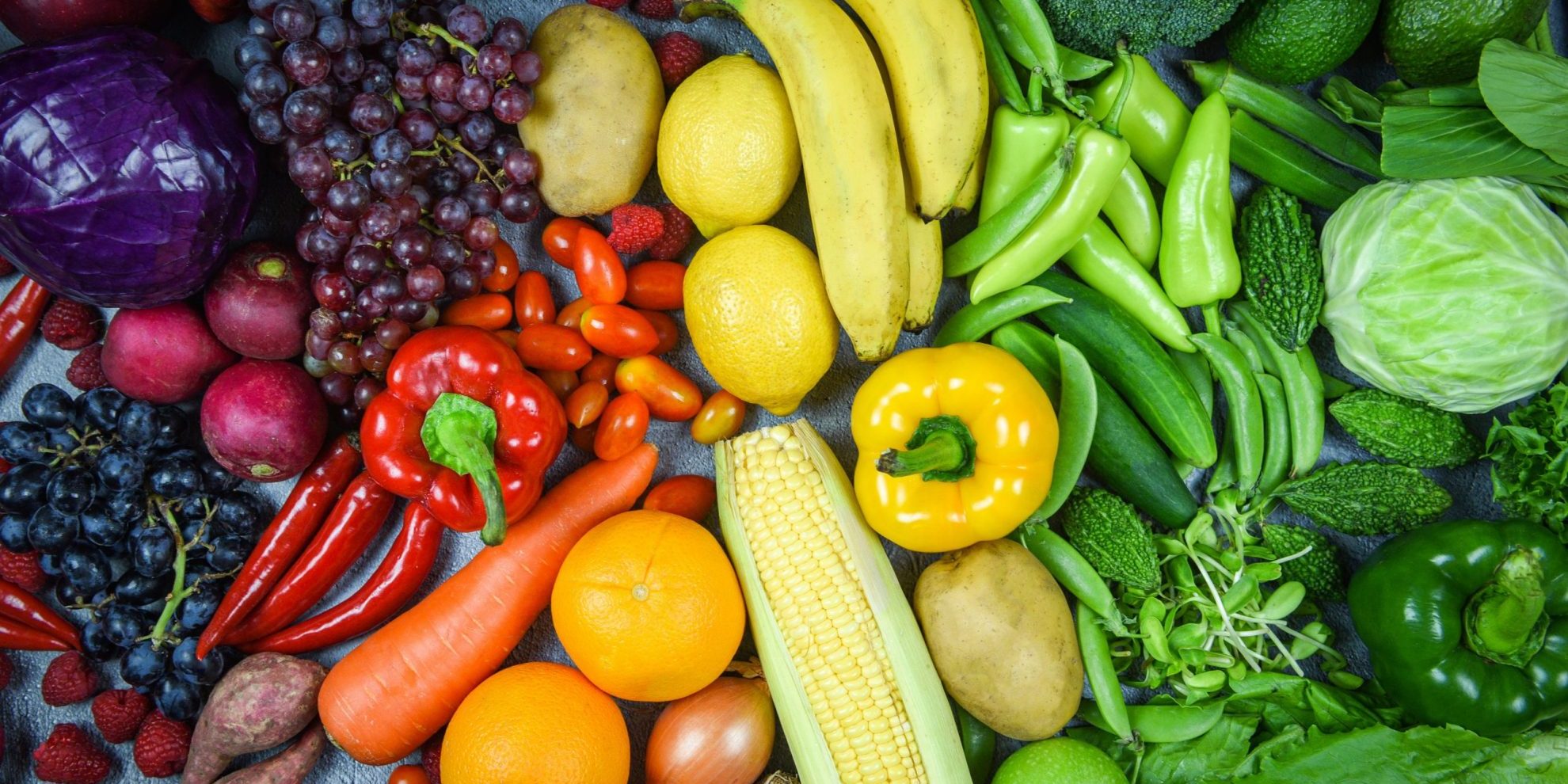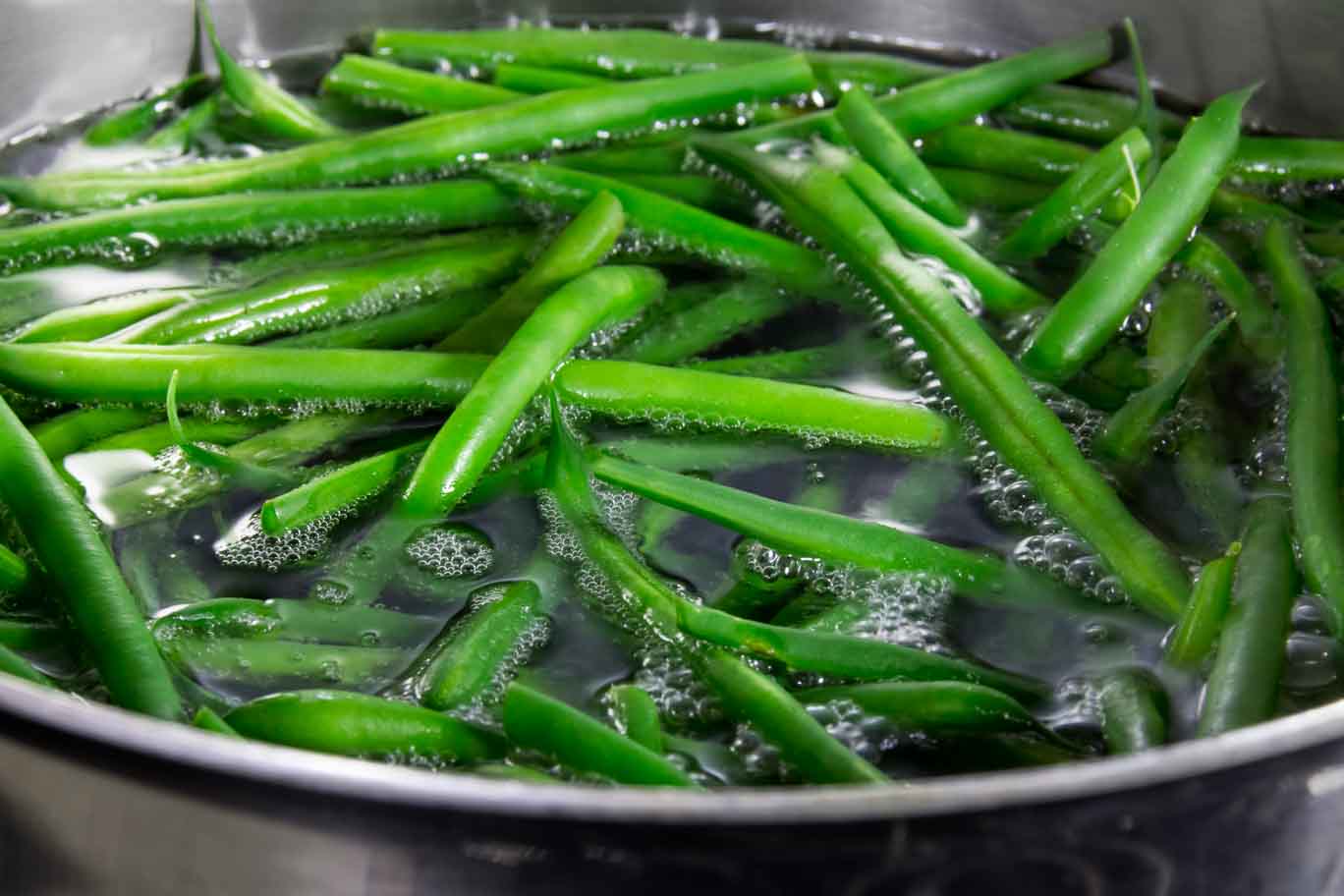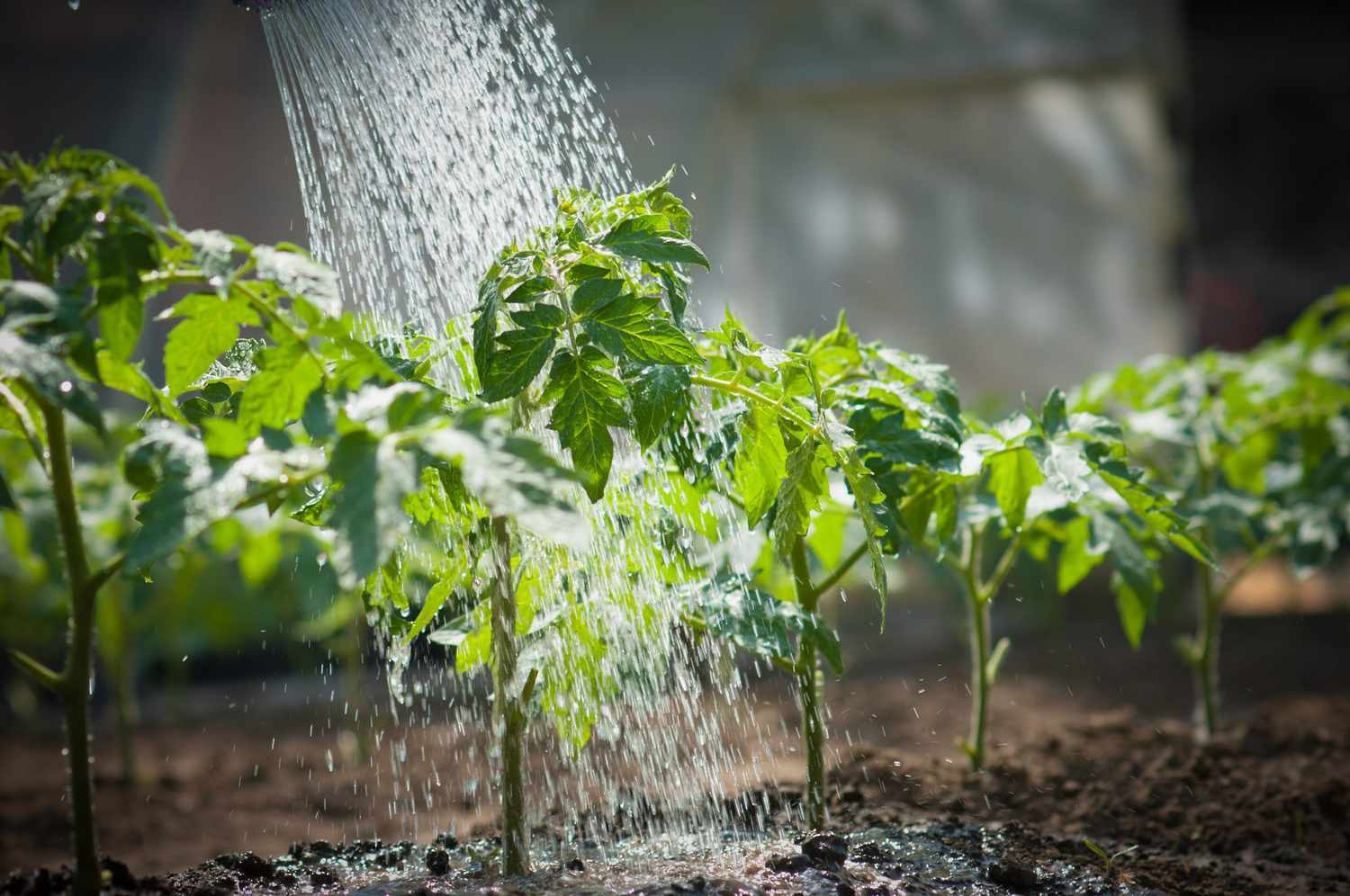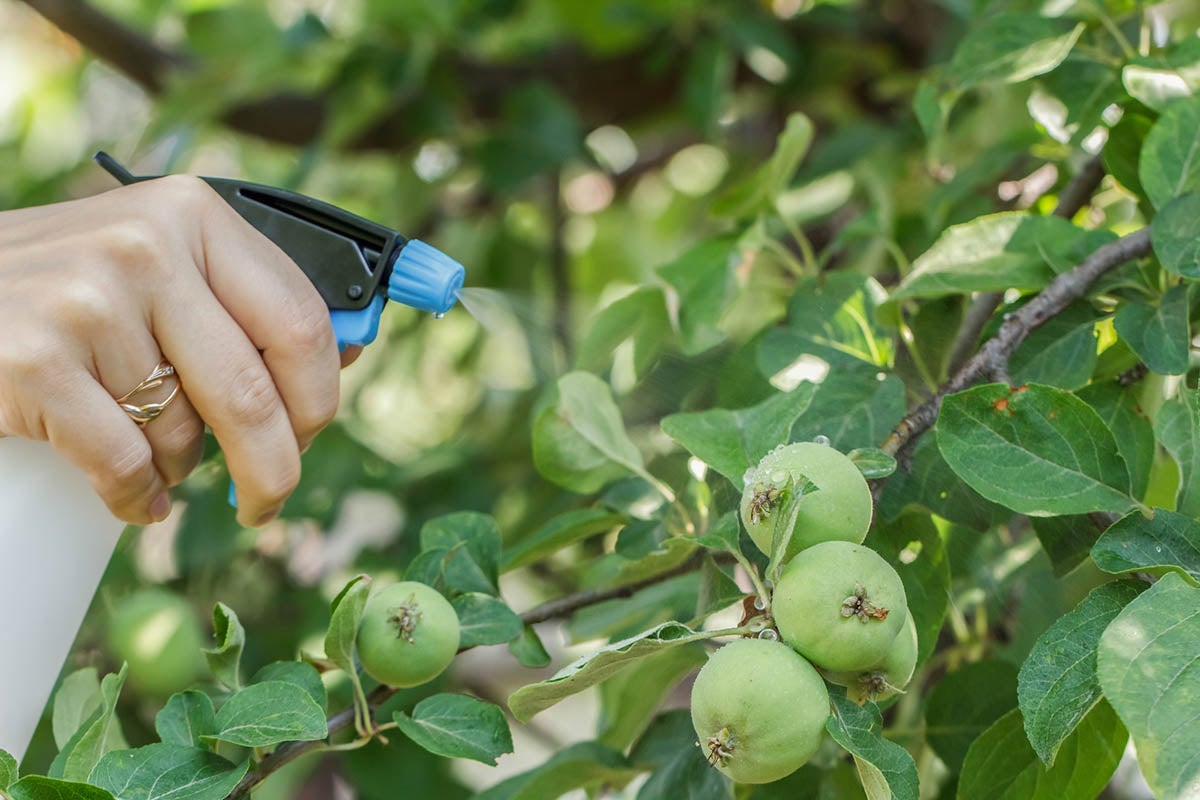Home>Gardening News and Trends>Latest News>Why Do Grocery Stores Spray Vegetables With Water
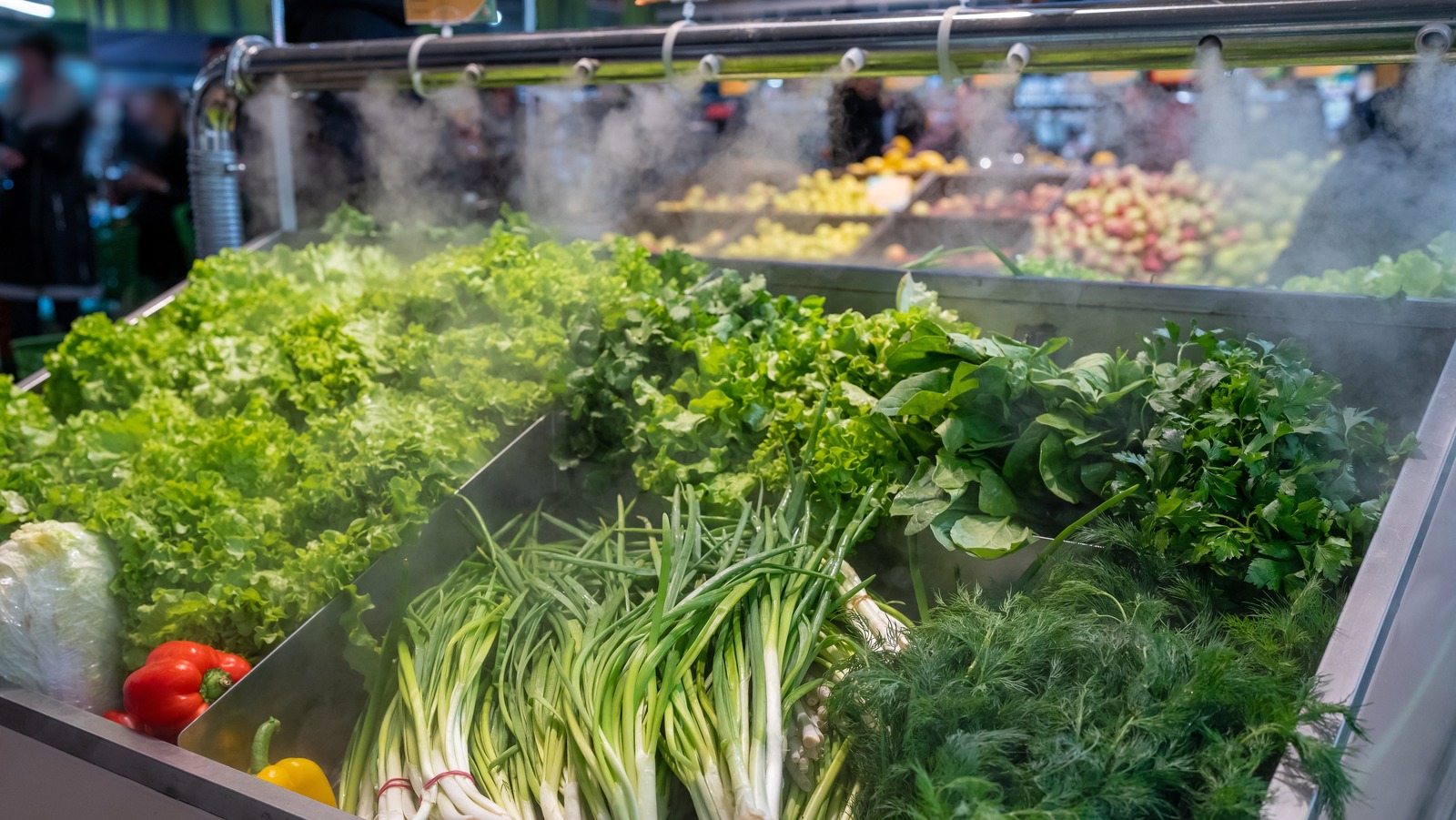

Latest News
Why Do Grocery Stores Spray Vegetables With Water
Modified: January 22, 2024
Stay updated with the latest news on why grocery stores spray vegetables with water and its benefits. Learn how this common practice helps maintain freshness and quality.
(Many of the links in this article redirect to a specific reviewed product. Your purchase of these products through affiliate links helps to generate commission for Chicagolandgardening.com, at no extra cost. Learn more)
Table of Contents
Introduction
Grocery stores are a common sight in our daily lives, offering a wide array of fresh produce to consumers. However, have you ever wondered why grocery stores spray vegetables with water? It may seem like a puzzling practice, but there are several reasons behind this seemingly simple act. In this article, we will explore the purpose, benefits, methods, and controversies surrounding the practice of spraying vegetables with water in grocery stores.
Spraying vegetables with water serves multiple purposes, but one of the primary reasons is to maintain the freshness and appearance of the produce. When fruits and vegetables are harvested, they undergo a significant change in environment. They are separated from the plants that nurtured them, exposing them to different levels of humidity and temperature. This change can cause dehydration and wilting, affecting the overall quality of the produce. By spraying water, grocery stores help replenish the moisture content in the vegetables, keeping them crisp, juicy, and visually appealing.
Additionally, spraying vegetables with water can help enhance their shelf life. Certain types of produce, such as leafy greens and delicate herbs, tend to wilt quickly without adequate moisture. By misting these items with water, the grocery stores create a humid environment that slows down the wilting process, prolonging the shelf life of the vegetables and reducing wastage.
The decision to spray vegetables with water is influenced by various factors. Firstly, it depends on the type of produce and its vulnerability to dehydration. Leafy greens, herbs, and some fruits are more prone to wilting, so they often receive more frequent sprays of water. On the other hand, firmer vegetables like carrots or potatoes may not require as much moisture. The decision also takes into account the store’s location and climate. In hot and arid regions, where moisture loss is more rapid, stores may spray their vegetables more frequently to combat dehydration.
When it comes to the type of water used for spraying vegetables, stores usually prioritize using clean, potable water. This ensures that the quality and safety of the produce are not compromised. Some stores even invest in water filtration systems to remove any impurities before spraying. In certain cases, stores may add additives to the water, such as organic compounds or citrus extracts, as a natural way to enhance the freshness and aroma of the vegetables.
Purpose of Spraying Vegetables
The primary purpose of spraying vegetables with water in grocery stores is to maintain the freshness and appearance of the produce. As mentioned earlier, when fruits and vegetables are harvested, they experience a sudden change in environment. They are separated from the plants that nourished them and exposed to different levels of humidity and temperature. This abrupt shift can lead to dehydration and wilting, compromising the quality of the produce.
By spraying water, grocery stores help to combat this dehydration and improve the shelf life of the vegetables. The moisture from the water helps replenish the lost moisture within the vegetables, keeping them crisp, juicy, and visually appealing to customers. This is particularly important for delicate produce like leafy greens and herbs, which have high water content and are susceptible to wilting. The misting of water creates a humid environment, slowing down the wilting process and extending the shelf life of these perishable items.
In addition to maintaining freshness, another purpose of spraying vegetables is to enhance their visual appeal. We eat with our eyes first, and aesthetically pleasing produce often attracts more customers. By misting the vegetables, grocery stores can make them appear vibrant and attractive. The water droplets on the surface of the vegetables provide a fresh and dewy look, signaling to customers that they are purchasing high-quality and well-cared-for produce.
Moreover, spraying vegetables with water can help to remove any dust or dirt particles that may have accumulated on the surface during transportation or handling. This improves the overall cleanliness of the produce and ensures that customers are purchasing vegetables that are free from unwanted contaminants. The water acts as a natural cleanser, gently rinsing away any impurities and leaving the vegetables looking clean and fresh.
Additionally, the practice of spraying vegetables with water can have a psychological effect on customers. The sight and feel of moist vegetables can give the impression of just-harvested freshness, making customers more likely to choose these products over dry or wilting alternatives. This helps to boost sales and maintain customer satisfaction by providing them with produce that appears to be recently picked and in optimal condition.
In summary, the purpose of spraying vegetables with water in grocery stores is to maintain freshness, extend shelf life, enhance visual appeal, remove impurities, and create a perception of just-harvested freshness. By understanding the reasons behind this practice, consumers can appreciate the efforts made by grocery stores to deliver high-quality produce that is both visually appealing and ready for consumption.
Benefits of Spraying Vegetables
Spraying vegetables with water in grocery stores offers several benefits, ranging from improving the quality and shelf life of the produce to enhancing customer satisfaction. Let’s delve into the advantages of this practice:
- Retention of Freshness: By replenishing the moisture content in vegetables, spraying helps to maintain their fresh and crisp texture. This makes the produce more attractive to customers, as they associate freshness with higher quality.
- Prolonged Shelf Life: Certain types of vegetables, such as leafy greens and herbs, tend to wilt quickly without adequate moisture. Spraying vegetables with water helps to slow down the wilting process, extending their shelf life and reducing wastage.
- Enhanced Visual Appeal: Water droplets on the surface of vegetables create a visually pleasing effect, making them appear fresh and recently harvested. This can increase customer interest and willingness to purchase.
- Improved Cleanliness: Washing vegetables with water helps remove dirt, dust, and other impurities that may have accumulated during transportation and handling. This ensures that customers receive clean and hygienic produce.
- Perception of Optimal Condition: The presence of water droplets gives the impression that the vegetables are well cared for and recently harvested, boosting customer confidence in their quality.
- Customer Satisfaction: Fresh and visually appealing vegetables contribute to customer satisfaction, leading to repeat purchases and positive word-of-mouth recommendations.
- Environmental Considerations: Spraying vegetables with water is a more environmentally friendly method compared to using artificial preservatives. It helps to maintain the quality and appearance of produce without introducing harmful chemicals.
Incorporating all these benefits, the practice of spraying vegetables with water in grocery stores ensures that customers have access to the freshest, visually appealing, and clean produce possible. By extending the shelf life and maintaining the quality of the vegetables, stores can reduce food waste and contribute to a more sustainable approach to food consumption.
Factors Influencing the Decision to Spray Vegetables
The decision to spray vegetables with water in grocery stores is influenced by several factors, taking into consideration the type of produce, location, climate, and consumer preferences. Let’s explore these factors in more detail:
- Type of Produce: Not all vegetables require the same level of moisture. Leafy greens, herbs, and delicate fruits are more susceptible to wilting and dehydration. Therefore, these items usually receive more frequent and thorough sprays of water compared to firmer vegetables like carrots or potatoes.
- Vulnerability to Dehydration: Certain vegetables are naturally prone to dehydration due to their high water content. For example, lettuce, spinach, and herbs lose moisture rapidly, which is why stores prioritize the frequent misting of these items to combat wilting and maintain freshness.
- Location and Climate: Stores operating in hot and arid regions where moisture loss is more rapid may opt to spray vegetables more frequently. The local climate plays a significant role in determining the frequency and intensity of watering operations to ensure the optimal moisture levels are maintained.
- Customer Preferences: Consumer demand and preferences also contribute to the decision to spray vegetables. Retailers want to offer produce that appeals to their customers. If customers show a preference for visibly moist vegetables, stores are more likely to increase the frequency of sprays to meet this demand.
- Available Resources: The resources available to the store, such as budgets for produce maintenance, staffing, and infrastructure, can also influence the decision to spray vegetables. Stores with ample resources may invest in more sophisticated misting systems or water filtration systems to ensure the quality and safety of the produce.
By considering these factors, grocery stores can develop effective strategies for spraying vegetables that meet the specific needs of their produce, location, and customer base. The aim is to find the right balance between maintaining freshness and minimizing waste while also keeping in line with consumer preferences and environmental considerations.
Types of Water Used for Spraying Vegetables
The type of water used for spraying vegetables in grocery stores is an important consideration to ensure the quality and safety of the produce. Here are some common types of water used:
- Potable Water: The most common choice for vegetable spraying is potable water, which refers to water that is safe for human consumption. This water undergoes filtration and treatment processes to meet regulatory standards for drinking water quality. It is free from impurities and contaminants, ensuring the cleanliness of the produce.
- Purified Water: Some stores go the extra mile by using purified water for spraying vegetables. Purified water goes through additional filtration processes to remove any remaining impurities or chemicals, ensuring a higher level of purity. This helps maintain the integrity and quality of the produce.
- Filtered Water: Another option is filtered water, which involves the use of filtration systems to remove particulates, sediment, and any potential contaminants. Filtration systems can use activated carbon filters or reverse osmosis to purify the water, ensuring it meets quality standards for spraying vegetables.
- Additives: In certain cases, stores may add additives to the water used for spraying vegetables. These additives can include organic compounds or citrus extracts, which serve as natural enhancers for freshness and aroma. However, it is crucial for stores to use additives that are approved for food safety and meet regulatory requirements.
The choice of water depends on various factors, including the store’s resources, commitment to quality, and customer expectations. While potable water is the most common choice, some stores may opt for additional purification methods to provide an extra level of quality assurance.
Regardless of the type of water used, it is vital for stores to regularly clean and maintain their spraying systems to prevent the build-up of bacteria or mineral deposits. Regular maintenance ensures that the water remains clean and safe for use on the vegetables.
By utilizing clean and safe water, stores can enhance the freshness and appearance of the vegetables while ensuring that customers receive high-quality produce that is free from potential contaminants.
Controversies Surrounding Vegetable Spraying
The practice of spraying vegetables with water in grocery stores has not been without its fair share of controversies. While many view it as a necessary step to maintain freshness and appeal, others have voiced concerns about potential drawbacks. Here are some of the controversies surrounding vegetable spraying:
- Microbial Growth: One concern is the potential for microbial growth due to the presence of moisture on the vegetables. If not properly managed, moisture can create a favorable environment for the growth of bacteria, molds, and fungi, which can be harmful if consumed. It is essential for stores to follow strict hygiene protocols and regularly clean their spraying systems to reduce the risk of microbial contamination.
- Pesticide Residues: Another controversy involves the presence of pesticide residues on the surface of vegetables. If the produce has been treated with pesticides during cultivation, spraying water may not effectively remove all traces of these substances. It is important for stores to ensure that the vegetables they sell comply with pesticide residue regulations to minimize potential health risks.
- Environmental Impact: Some argue that the excessive use of water for spraying vegetables in grocery stores contributes to water wastage and environmental concerns. Water is a precious resource, and the practice of spraying vegetables should be carried out responsibly and efficiently to minimize water consumption.
- Perception of Freshness: There is a debate about whether spraying vegetables with water gives a false perception of freshness. Some argue that visually moist produce may mislead customers into thinking the vegetables are newly harvested when they may have been stored for an extended period. It is essential for stores to maintain transparency and ensure proper labeling of the produce to provide accurate information to customers.
- Alternative Preservation Methods: Critics question the necessity of spraying vegetables when other preservation methods, such as refrigeration or modified atmosphere packaging, can also help maintain freshness and extend shelf life without the use of water. Stores should consider and explore more sustainable and eco-friendly preservation techniques to reduce reliance on water spraying.
It is crucial for grocery stores to address these controversies through proper risk management, stringent hygiene practices, and responsible water usage. Regular monitoring, testing, and adherence to food safety regulations can help mitigate the potential risks associated with vegetable spraying and ensure that customers are provided with safe and high-quality produce.
By staying informed and engaging in open dialogue, both consumers and grocery stores can work together to promote best practices and address any concerns related to vegetable spraying.
Conclusion
The practice of spraying vegetables with water in grocery stores serves a crucial purpose in maintaining the freshness, quality, and visual appeal of the produce. By replenishing moisture, extending shelf life, and enhancing cleanliness, this practice ensures that customers have access to high-quality and visually appealing vegetables.
Factors such as the type of produce, climate, customer preferences, and available resources influence the decision to spray vegetables. Grocery stores use different types of water, including potable water, purified water, and filtered water, to ensure cleanliness and safety. However, controversies surrounding microbial growth, pesticide residues, environmental impact, and the perception of freshness call for responsible management and increased transparency.
Despite these controversies, vegetable spraying remains an integral part of maintaining the quality and appeal of produce in grocery stores. It is crucial for stores to implement proper food safety protocols, regular maintenance of spraying systems, and adherence to pesticide residue regulations to ensure consumer safety.
As consumers, it is essential to be aware of these practices and make informed choices when selecting produce. Paying attention to labels, asking questions, and supporting stores that prioritize sustainability and quality can contribute to a positive and responsible food purchasing experience.
By striking a balance between maintaining freshness and minimizing waste, addressing concerns, and adapting sustainable practices, grocery stores can continue to provide customers with fresh and appealing vegetables while upholding food safety and environmental stewardship.
